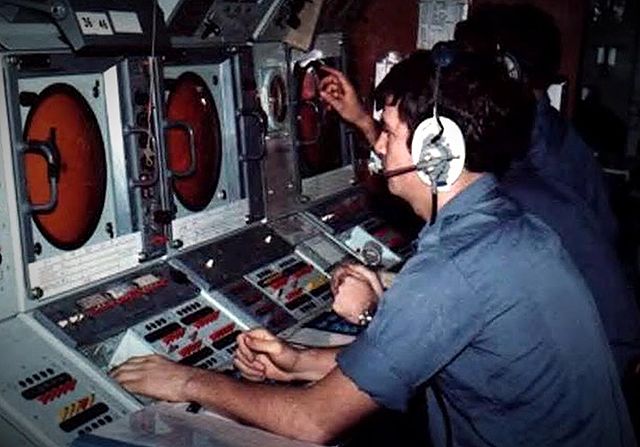Top Qs
Timeline
Chat
Perspective
Plot (radar)
Graphic display that shows all collated data from a ship's on-board sensors From Wikipedia, the free encyclopedia
Remove ads
In naval terminology, a plot is a graphic display that shows all collated data from a ship's on-board sensors, i.e. radar, sonar and EW systems. They also displayed information from external sources - for example, other vessel or aircraft reports. There are four different types of plot, each with varying capabilities, i.e. range, depending on their role;[1]
- Air plot: Used for tracking air contacts, i.e. planes and EW information.
- Surface plot: Used for tracking contacts on the surface of the water, i.e. other ships.[2][3][4] It can also perform a variety of roles such as:
- Providing a trace of a ship's own course and speed over time.[2][4]
- Plotting the position of a man overboard.[2]
- Can be used in naval gunfire support missions to plot unidentified contacts and keep track of friendly forces.[3]
- It also plays an important part in anti-submarine warfare operations and using torpedoes.[3]
- Sub-surface plot: Used for tracking contacts below the surface of the water, i.e. submarines.
- General operations plot: Used for tracking shipping on a large-scale chart. Was also used to display exercise boundaries, airplanes and other significant features of maritime interest. In the Royal Australian Navy, the scale used was generally 5 or 10 miles (8.0 or 16.1 km) per 1 inch (25 mm).

Remove ads
Notes
Wikiwand - on
Seamless Wikipedia browsing. On steroids.
Remove ads
